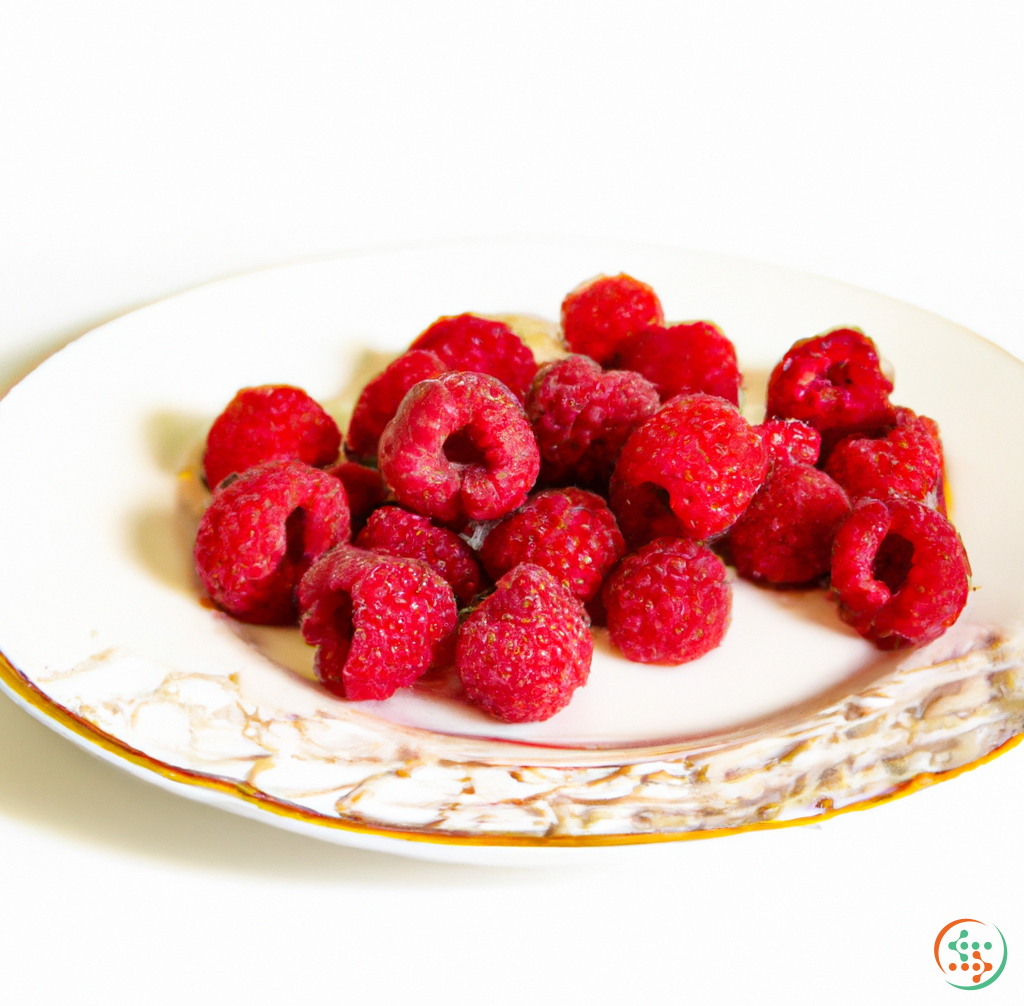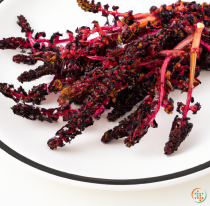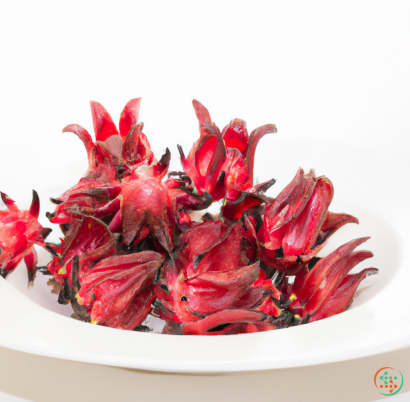Raspberries
Raspberries are an edible fruit that is found across the world, and they have been part of the human diet since ancient times. While the sweet, tart flavor is familiar to many, not everyone is aware of the versatility and nutrition that raspberries offer. Here’s a quick look at what makes this fruit so beloved.
Raspberries belong to the genus Rubus and are a member of the rose family. The most popular type is the red raspberry, but there are other variations as well, including black, golden, purple, and orange raspberries. They are small, yet plump, and have a hollow center that contains many miniscule edible and nutritious seeds. Raspberries have an irregular, conical shape and a skin that has a delicate, slightly hairy texture.
Wild raspberries are the original source for this fruit, but the modern raspberry can trace its roots to purposeful breeding and cultivation that began in Europe during the Middle Ages. Hops and sugar are often added to cultivated raspberries, enhancing the taste and improving shelf life. Unlike other fruit, raspberries generally do not need to ripen before they are eaten. This makes them a versatile addition to many dishes.
The nutritional benefits of raspberries are more impressive than the taste. They are a low-calorie food and contain generous amounts of fiber and vitamins C and K, both essential for a healthy diet. Raspberries also contain disease-fighting antioxidants, including anthocyanins, which give the ripe fruits their red color.
Raspberries are an excellent source of manganese, potassium and magnesium. They are thought to be beneficial to those with cardiovascular health concerns, as eating raspberries can reduce bad cholesterol levels, decrease stroke risk and improve overall heart health. Studies have also found that consumption of raspberries can reduce some cancer risks, such as colon, lung, and stomach cancer.
In terms of taste, red raspberries are sweet, but there is still a tartness to them. Depending on the variety, they can be slightly sour as well. Their flavor is best enjoyed fresh, when they are at their most ripe, but they can also be processed in various ways. For example, raspberry juice can be extracted and sweetened, then served or canned. Alternatively, frozen raspberries can be used to make many different types of desserts, from jams and jellies to pies and tarts.
When it comes to storing raspberries, the most important thing is to get them in the refrigerator as soon as you can, as they will quickly start to deteriorate at room temperature. Fresh raspberries should last around 5 days in the fridge, if stored correctly. Frozen raspberries can be kept for up to a year if stored in an airtight container.
In conclusion, raspberries are a beloved fruit that have been around since ancient times. Thanks to their sweet, tart flavor and impressive nutritional benefits, they are very versatile and can be eaten fresh or used in a variety of recipes. Coupled with the fact that they are easy to store, it’s no wonder that raspberries remain a popular choice among fruit lovers.
The Journey of a Raspberry: From the Farm to Your Plate
There is nothing quite like biting into a fresh, juicy raspberry that has just been picked off the plant. Whether popping one into your mouth while visiting a farm or savoring the taste in your favorite dessert, the raspberry is a universally loved delicacy. But what happens between the time it is plucked from the vine and the time it reaches your plate? This blog post will delve into the fascinating world of raspberry production, harvest, and transportation, ultimately tracing the journey of a raspberry from the farm to your dinner plate.
Raspberries are an aggregate fruit of the Rubusidae family. The delicious orbs are made up of a series of drupelets – tiny, individual fruits – which form around a central core. The fruit originally hails from Europe, though there are now hundreds of varieties cultivated around the world. In order to create raspberries, pollination is required. This process occurs when tiny dust-like pollen grains are zipped off the male stamens (located inside the center of a flower) onto the female pistils. When the pollen is encapsulated, it is delivered to the ovules, where fertilization will occur. After a few days, these small green pearls turn pink and red, transforming into the sweet and succulent morsels we’ve grown to love.
In order to ensure that the fruit reaches its peak quality, the most popular variety of raspberry – the Western raspberry – is grown in temperate climates with plenty of water and sun. Generally, the fruit ripens about 90 days after flowering, on average, and is then ready for harvest. Depending on the region, this can occur as early as May and as late as November.
When harvest time comes, farmers often use a device called a mechanical raspberry harvester in order to quickly and efficiently pluck the ripe fruit from the patch. The harvester shakes the plant, causing the ripe fruit to drop onto a conveyor belt. From here, the fruit is transported either to a packaging station or directly to a cooling area for immediate use.
Once harvested, the raspberries must be cooled to prevent rot and loss of flavor. For this, many farms utilize forced-air cooling technology, which rapidly cools the fruit before storage or shipping. This process aids in retain the texture and flavor of the fresh pick.
Following the cooling process, the raspberries are moved to packaging, where they are carefully washed and inspected for quality control. They are then placed in clamshells and moved to a cooler for shipping. The clamshell packaging is useful for preventing berries from being crushed in transit, as well as allowing farmers to package the fresh fruit in batches for retail sales.
From here, the raspberries travel to the store or to your doorstep. Depending on the needs of the shipper, the raspberries may travel by truck, rail, ship, or even plane. Upon arrival, the clamshell is opened and the raspberries are shelved or placed in the refrigerator. After a shopping trip, it is now time to head to the kitchen to create a culinary masterpiece!
To begin, simply wash the fresh fruit with cool water. If you fear that the raspberries have been sprayed with pesticides, a good soak in a vinegar-water solution can help eliminate any unwanted residues. After washing, the raspberries are ready to be enjoyed!
There are an endless amount of ways to enjoy the sweet and tart flavor of the raspberry. Many cultures around the world have a variety of dishes that feature the fruit. Share a classic raspberry sorbet with your friends, liven up a salad with raspberries, or pair them with dark chocolate for a decadent treat. Raspberries also make for a great topping over ice cream or yogurt. Ultimately, the versatility of raspberries shines when it comes to crafting a scrumptious meal!
Years of hard work, research, and continuous improvement have led to the flavorful, plump raspberries that are now enjoyed around the world. By retracing the steps of the raspberry’s journey, we get a glimpse into the complexity of the food system and the dedicated individuals behind it. From the farmers and harvesters to the packaging and transport – these steps all play a crucial role in making sure your dinner plate is adorned with the sweet, fragrant raspberry.
| Vitamin A | 0.002 mg | |
| Beta-Carotene | 0.012 mg | |
| Alpha-Carotene | 0.016 mg | |
| Vitamin E | 0.87 mg | |
| Vitamin K | 0.0078 mg | |
| Vitamin C | 0.0262 grams | |
| Vitamin B1 | 0.03 mg | |
| Vitamin B2 | 0.04 mg | |
| Vitamin B3 | 0.6 mg | |
| Vitamin B4 | 0.0123 grams | |
| Vitamin B5 | 0.33 mg | |
| Vitamin B6 | 0.06 mg | |
| Vitamin B9 | 0.021 mg |
| Calcium | 0.025 grams |
Daily Value 1.3 g
|
| Iron | 0.69 mg |
Daily Value 0.018 g
|
| Magnesium | 0.022 grams |
Daily Value 0.4 g
|
| Phosphorus | 0.029 grams |
Daily Value 1.25 g
|
| Potassium | 0.151 grams |
Daily Value 4.7 g
|
| Sodium | 0.001 grams |
Daily Value 2.3 g
|
| Zinc | 0.42 mg |
Daily Value 0.011 g
|
| Copper | 0.09 mg |
Daily Value 0.9 mg
|
| Manganese | 0.67 mg |
Daily Value 0.0023 g
|
| Selenium | 0.2 ug |
Daily Value 0.055 mg
|
| Glucose | 1.86 grams |
|
| Fructose | 2.35 grams |
|
| Sucrose | 0.2 grams |
|
| Total Sugars | 0.131141 grams |
per 100g
|
| Palmitic acid (16:0) | 0.02 grams |
|
| Total Saturated fatty acids: | 0.02 g | |
| Oleic acid (18:1) | 0.06 grams |
|
| Gadoleic acid (20:1) | 0.01 grams |
|
| Total Monounsaturated fatty acids: | 0.07 g | |
| Linolenic acid (18:3) | 0.13 grams |
|
| Linoleic acid (18:2) | 0.25 grams |
|
| Total Polyunsaturated fatty acids: | 0.38 g | |







